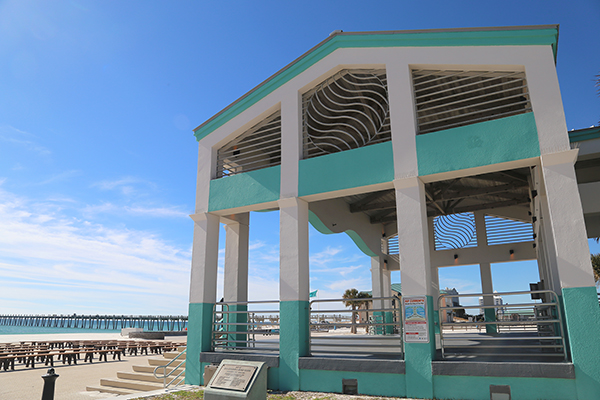
Spending Plan OK’d for Tourism Marketing
By Jim Turner The News Service of Florida
TALLAHASSEE — Visit Florida will help promote Panhandle counties affected by the 2010 Deepwater Horizon disaster, expand European marketing and boost the pay of its leader, under a spending plan approved Thursday by the agency’s board.
The Visit Florida Board of Directors approved a budget for the upcoming fiscal year that includes $80 million from the state and $95.6 million from the industry.
Also, Chairwoman Jennifer Rominiecki pointed to “continuously stellar marketing programs” and record tourism numbers as the board approved bumping up President and CEO Dana Young’s salary by 15 percent to $230,000 a year.
“The (Nominating and Elections) Committee reviewed compensation for a number of comparable jobs, and the proposed increase of $30,000 is a bargain for the quality leadership we get from Dana and remains top value for the state of Florida,” Rominiecki said during a board meeting at the Lido Beach Resort in Sarasota.
Young, a former state lawmaker from Tampa, has led the tourism-marketing agency since 2019.
Visit Florida’s website said pay for three executives, including Young, comes from state and private money, with taxpayers covering the first $120,000 for each.
The overall budget is 0.7 percent lower than the plan for the current fiscal year.
Lawmakers in March approved providing $80 million to Visit Florida in the 2024-2025 fiscal year, the same amount as in the current year, which will end June 30. The Legislature directed $1 million to market the state as a place for military veterans to permanently make their homes and $5 million is to promote nature-based tourism and trail towns.
Visit Florida’s budget includes $500,000 a year for the next three years as a match for $10.5 million in BP settlement money that is directed to the organization Triumph Gulf Coast to promote eight Panhandle counties. Triumph Gulf Coast was created to administer money resulting from the Deepwater Horizon disaster.
The goal is to promote Northwest Florida as a year-round destination to create “a more sustainable local economy,” said Brett Laiken, Visit Florida senior vice president of marketing.
The Triumph Gulf Coast board on Wednesday finalized its end of the marketing effort.
The Northwest Florida Tourism Council also is expected to put up $1.5 million during the three-year marketing campaign.
The Visit Florida budget also will provide $10.5 million to cover salaries and expenses of 89 employees, two more than in the current year; $2 million to refurbish the lobby of the Interstate 95 welcome center north of Jacksonville; and nearly $2 million for crisis management.
Asked about “chatter” in the media about impacts of climate change, Laiken said the crisis fund is needed to “get in front of” negative media coverage and “really try to change the narrative.”
Visit Florida first raised its crisis budget from $1 million to $2 million for the current fiscal year.
The agency, which runs media campaigns throughout the U.S., Canada, Germany, the United Kingdom and Latin America, also is expected to spend $1.6 million on research projects that include a vacation-behavior study.
Visit Florida has put additional emphasis on marketing toward Los Angeles and Mexico, with the share of visitors from those areas increasing in the past year. Laiken said the agency will expand its approach to France, where it sees “a growth opportunity.”
“We’ll have a truly dedicated effort as we enter the country,” Laiken said.
Canada, the United Kingdom, Brazil, Colombia and Mexico are the top five countries for international visitors, with France 10th in 2023.
The state recently announced that an estimated 40.6 million people traveled to Florida during the first three months of 2024, a 1.2 percent increase from the same period in 2023.
The first-quarter numbers for this year were dominated by an estimated 37.187 million people traveling to Florida from other states, the most ever for a single quarter. Meanwhile, the estimated 2.13 million overseas tourists and 1.284 million Canadian visitors in the first quarter were up from the same period of 2023 but have not reached levels from 2019, the last full year before the COVID-19 pandemic.



